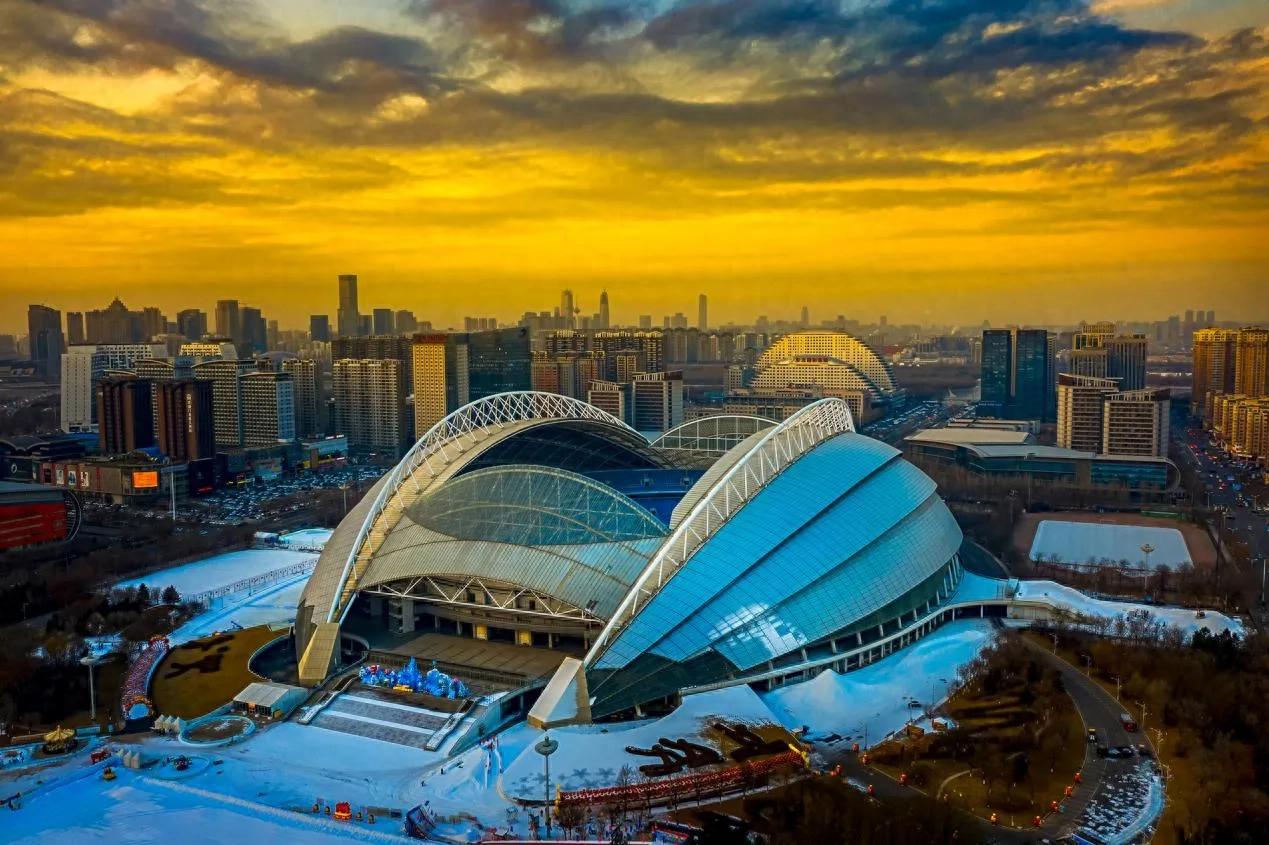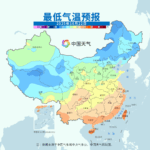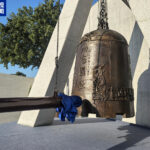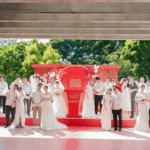“Winter Sunshine and Snow Fun in Shenyang” – enjoy festive shopping and joyful experiences. The Municipal Bureau of Culture, Tourism, and Radio & Television, together with the Municipal Bureau of Commerce, presents six themed shopping and travel routes for the New Year. Visitors can revel in the snow, embark on a shopping spree, and explore Shenyang’s unique retail scenes. Get ready for an exciting shopping and entertainment adventure in Shenyang!
Route 1: International Fashion Meets Artistic Living – A Perfect New Year Encounter
Itinerary: Liaoning Provincial Museum → Shenyang MixC or K11 Shopping Art Center → Shenyang Olympic Sports Ice & Snow Carnival → Shengjing Grand Theater → Hunhe River Bund / Time Bar Street. Highlights: Begin your journey with the “Goddess of the Luo River” exhibit at Liaoning Museum. Explore MixC’s luxury boutines or K11’s festive-themed events. Experience the 2000-meter ice slide and 800-square-meter “Magical Fantasy” light show at the Olympic Sports Carnival. Catch performances like “Pinocchio” or “The Eyewitness” at Shengjing Grand Theater, then enjoy Shenyang’s vibrant nightlife at Hunhe River Bund and Time Bar Street. Local flavors: New Liaoning Cuisine, hotpot, Northeast-style BBQ. Transport: Metro/driving recommended. Time Bar Street is a 15-minute walk from Tiancheng Street Station (Metro Line 9).
Route 2: Industrial Heritage & Home Decor – A Treasure Hunt for New Year
Itinerary: China Industrial Museum → 1905 Cultural Creative Zone / Hongmei Creative Zone → IKEA Shenyang → Shan Shan Outlets. Highlights: Celebrate with industrial art and home upgrades. Industrial enthusiasts will love the museum and creative zones, while decor lovers can explore IKEA. Shan Shan Outlets offers great deals and festive activities. Local flavors: Iron-griddle chicken skewers, Shenyang spicy soup, Northeast lunchboxes, BBQ. Transport: Driving recommended. Shan Shan Outlets is 20km (40min drive) from downtown.
Route 3: Cultural Heritage & New Year Traditions – An Immersive Experience
Itinerary: Zhongxing Shenyang Commercial Building → Jiǔwǔ Culture City → Xita Korean Street → Liaoning Zhonghua Theater → 2025 Heping Bay New Year Lantern Festival. Highlights: Discover intangible cultural heritage activities at Zhongxing and Jiǔwǔ. Savor Korean cuisine on Xita Street. Enjoy dance and comedy at Zhonghua Theater. Marvel at themed lantern displays at Heping Bay. Local flavors: Korean BBQ, sukiyaki, grilled eel, ginseng chicken soup, spicy crab. Transport: Driving recommended. Heping Bay is 13km (30min drive) from downtown.
Route 4: Family Fun & New Year Blessings – Holiday Joy for All
Itinerary: Xiaoheyan Morning Market → Zhang Xueliang’s Former Residence → Shenyang Imperial Palace → Zhongjie (MixC / Joy City / Longemont) → Laobeishi Cultural Block (Imperial Temple Fair) / Liu Laogen Grand Stage. Highlights: Experience local breakfast at the morning market. Explore history at Zhang Xueliang’s Residence and the snow-covered Imperial Palace. Enjoy Zhongjie’s “Golden Arch Parade” and Longemont’s folk performances. Visit Laobeishi for temple fair blessings. Local flavors: Laobian dumplings, Ma’s steamed buns, Zhongjie ice treats. Transport: Metro/driving recommended. The temple fair is a 16-minute walk from People’s Square Station (Metro Line 2).
Route 5: Family Adventures & Winter Wonderland – A Playground of Surprises
Itinerary: Spring Outlets → Qipanshan Ice & Snow World → Guandong Film Studio. Highlights: Join Spring Outlets’ “Fortune Gift” events. At Qipanshan, try alpine skiing, ice fishing, and winter fishing. Experience the Guandong Film Studio’s lantern festival with fireworks and open-air dances. Local flavors: Northeast stewed dishes, iron-pot cuisine. Transport: Driving recommended. Guandong Film Studio is 30km (40min drive) from Spring Outlets.
Route 6: Childhood Nostalgia & Rural Festivities – Relive New Year Memories
Liaoning Provincial Museum
The Liaoning Provincial Museum, located in Shenyang, is one of China’s most prominent museums, showcasing over 120,000 artifacts that highlight the region’s rich history. Established in 1949, the museum features collections from ancient dynasties, including Liao, Jin, and Qing, with notable exhibits like Neolithic jade, Ming and Qing porcelain, and Qing imperial relics. Its displays offer deep insights into Northeast China’s cultural and historical heritage.
Shenyang MixC
Shenyang MixC is a large shopping mall located in Shenyang, Liaoning Province, China, known for its modern architecture and diverse retail, dining, and entertainment options. Opened in 2019, it is part of the MixC brand by China Resources Land, blending luxury shopping with lifestyle experiences. The mall reflects Shenyang’s growth as a major commercial hub in Northeast China, offering a mix of international and local brands.
K11 Shopping Art Center
The **K11 Shopping Art Center** is a unique retail and cultural space that blends art, commerce, and creativity. Founded in 2009 by entrepreneur Adrian Cheng, K11 was the world’s first “art mall,” featuring contemporary art installations, exhibitions, and cultural events alongside luxury shopping. With locations in Hong Kong, Shanghai, and other major cities, K11 aims to promote art appreciation and sustainability while redefining the traditional shopping experience.
Shenyang Olympic Sports Ice & Snow Carnival
The **Shenyang Olympic Sports Ice & Snow Carnival** is an annual winter festival held in Shenyang, China, featuring ice sculptures, snow activities, and winter sports. It celebrates the region’s cold climate and promotes winter tourism, often held at the Shenyang Olympic Sports Center, a venue built for the 2008 Beijing Olympics football matches. The carnival blends modern sports with traditional winter culture, attracting visitors for seasonal fun and competitions.
Shengjing Grand Theater
The **Shengjing Grand Theater** is a prominent cultural venue in Shenyang, China, known for hosting a variety of performances, including operas, concerts, and theatrical productions. Reflecting Shenyang’s historical significance as the former capital of the Qing Dynasty (under the name *Shengjing*), the theater blends modern architecture with traditional influences. It serves as a key hub for arts and culture in Northeast China, celebrating both contemporary and classical performances.
Hunhe River Bund
The Hunhe River Bund is a scenic waterfront area along the Hunhe River in Shenyang, China, known for its picturesque landscapes and recreational spaces. Developed as part of urban renewal efforts, it combines modern leisure facilities with historical elements, reflecting the region’s connection to the Qing Dynasty and early industrialization. Today, it serves as a popular destination for walking, cycling, and cultural events, blending natural beauty with urban development.
Time Bar Street
Time Bar Street, located in Yangshuo, China, is a vibrant nightlife hub known for its lively bars, cafes, and street performances. Originally a quiet area, it gained popularity in the 1990s as a gathering spot for backpackers and travelers exploring the scenic Li River and karst landscapes. Today, it blends traditional Chinese culture with modern entertainment, offering a unique mix of local and international flavors.
China Industrial Museum
The China Industrial Museum, located in Shenyang, showcases the history and achievements of China’s industrial development, particularly highlighting the heavy industry sector. Established in 2007, the museum is housed in a renovated factory building and features exhibits on machinery, manufacturing, and technological advancements from the early 20th century to the present. It serves as an important cultural site preserving the legacy of China’s industrialization and economic growth.
1905 Cultural Creative Zone
The **1905 Cultural Creative Zone** is a vibrant arts and culture hub in Shenyang, China, housed in a repurposed early 20th-century industrial complex. Originally built in 1905 as part of Shenyang’s industrial development, it was transformed in 2012 into a space for galleries, studios, and creative businesses. Today, it celebrates contemporary art, design, and local heritage while preserving its historical industrial architecture.
Hongmei Creative Zone
The **Hongmei Creative Zone** is a vibrant cultural and artistic hub located in Changzhou, China, known for its blend of industrial heritage and modern creativity. Originally a factory complex, it was transformed into a dynamic space featuring art galleries, design studios, cafes, and cultural events. Today, it serves as a center for innovation, attracting artists, entrepreneurs, and visitors seeking inspiration.
IKEA Shenyang
IKEA Shenyang is a branch of the Swedish multinational furniture retailer located in Shenyang, China. Opened in [year, if available—research needed], it follows IKEA’s global model of offering affordable, ready-to-assemble home furnishings and Scandinavian-inspired designs. As part of IKEA’s expansion in China, the store reflects the brand’s cultural adaptation, blending its iconic shopping experience with localized products to cater to Chinese consumers.
*(Note: The exact opening year of IKEA Shenyang isn’t widely documented in English sources; verifying with local Chinese records would provide accuracy.)*
Shan Shan Outlets
Shan Shan Outlets is a popular shopping destination in Taiwan, known for offering discounted branded goods in an open-air mall setting. It is part of the larger Shin Kong Mitsukoshi retail group, which has a strong presence in Taiwan’s retail industry. The outlets provide a mix of international and local brands, attracting shoppers with its convenient location and seasonal sales events.
Zhongxing Shenyang Commercial Building
Zhongxing Shenyang Commercial Building is a well-known shopping center located in Shenyang, Liaoning Province, China. Established in the late 20th century, it became a prominent retail hub, reflecting the city’s economic growth and modernization. The building offers a mix of fashion, electronics, and dining options, catering to both locals and visitors.
Jiǔwǔ Culture City
Jiǔwǔ Culture City (九五文化城) is a modern cultural and commercial complex in China, often designed to promote traditional Chinese culture alongside contemporary entertainment and shopping. While specific historical details may vary by location, such sites typically integrate elements of Chinese heritage, such as architecture, art, and performances, with modern amenities. The name “Jiǔwǔ” (九五) may reference imperial symbolism, as the number nine-five has historical ties to the majesty of ancient Chinese emperors.
Xita Korean Street
Xita Korean Street, located in Shenyang, China, is a vibrant cultural hub known for its strong Korean influence, featuring authentic Korean restaurants, shops, and cultural events. Established in the 1990s, it became a center for the local Korean-Chinese community and Korean expatriates, reflecting decades of cultural exchange. Today, it attracts visitors with its lively atmosphere, K-pop trends, and traditional Korean cuisine.
Liaoning Zhonghua Theater
Liaoning Zhonghua Theater is a prominent cultural venue in Shenyang, Liaoning Province, known for showcasing traditional Chinese performing arts, including Peking Opera and local folk performances. Established in the 20th century, it has played a significant role in preserving and promoting China’s theatrical heritage. The theater remains a key hub for cultural exchange and artistic innovation in Northeast China.
2025 Heping Bay New Year Lantern Festival
The **2025 Heping Bay New Year Lantern Festival** is a vibrant celebration held in Heping Bay Park, Taiwan, featuring dazzling lantern displays, cultural performances, and traditional festivities to welcome the Lunar New Year. Originating from Taiwan’s rich lantern festival traditions, this event highlights both modern and traditional artistry, often incorporating themes of peace (Heping) and prosperity. The festival attracts visitors with its illuminated installations, local food stalls, and lively atmosphere, continuing a beloved cultural legacy.
Xiaoheyan Morning Market
The Xiaoheyan Morning Market is a bustling traditional market in Taiwan, known for its vibrant atmosphere and diverse array of fresh produce, street food, and local goods. With a history rooted in Taiwan’s agricultural and trading culture, it has served as a community hub for decades, offering a glimpse into daily life and regional culinary traditions. The market remains a popular spot for both locals and tourists seeking authentic Taiwanese flavors and a lively shopping experience.
Zhang Xueliang’s Former Residence
Zhang Xueliang’s Former Residence, located in Shenyang, Liaoning Province, was the home of the famous Chinese warlord and patriotic general Zhang Xueliang (1901–2001). The site reflects early 20th-century Chinese architecture and commemorates his role in modern Chinese history, including the Xi’an Incident (1936), where he helped facilitate cooperation between the Chinese Communist Party and the Nationalists against Japanese invasion. Today, it serves as a museum showcasing his life and contributions to China’s wartime resistance.
Shenyang Imperial Palace
The Shenyang Imperial Palace, located in Shenyang, Liaoning Province, is a historic palace complex built in 1625 during the early Qing Dynasty. It served as the residence of the Qing emperors before they moved the capital to Beijing. Today, it is a UNESCO World Heritage Site and showcases Manchu-style architecture and imperial artifacts.
Zhongjie
Zhongjie, often referred to as “Central Street,” is a historic commercial and cultural hub in many Chinese cities, with the most famous one located in Harbin, Heilongjiang Province. Built in the late 19th century, Harbin’s Zhongjie reflects Russian architectural influence due to the city’s history as a center for the Chinese Eastern Railway. Today, it is a vibrant pedestrian street known for its European-style buildings, shops, and cultural significance as a symbol of Harbin’s multicultural past.
MixC
MixC is a large, upscale shopping mall chain in China, developed by China Resources Land. Known for its modern architecture and luxury brands, MixC malls combine retail, dining, and entertainment, often serving as lifestyle hubs in major cities like Shenzhen and Shanghai. The first MixC mall opened in Shenzhen in 2004, and the brand has since expanded across China, reflecting the country’s rapid urbanization and consumer growth.
Joy City
Joy City is a large shopping and entertainment complex in Beijing, China, known for its modern architecture, retail outlets, and leisure facilities. Opened in 2008, it became a popular urban landmark, reflecting Beijing’s rapid commercial development. The site also features cultural elements, including art installations and events, blending contemporary lifestyle with local influences.
Longemont
“Longemont” (or *Longmen* in Mandarin) refers to the **Longmen Grottoes**, a UNESCO World Heritage Site in China’s Henan Province. These ancient Buddhist cave temples, carved between the 5th and 8th centuries during the Northern Wei and Tang Dynasties, feature over 100,000 intricate statues and inscriptions. The site reflects China’s religious art and cultural exchange along the Silk Road.
*(Note: If “Longemont” refers to a different location, please provide additional context for accuracy.)*
Laobeishi Cultural Block
The Laobeishi Cultural Block is a historic district in Xi’an, China, known for preserving traditional Shaanxi architecture and local culture. Once a bustling commercial hub during the Ming and Qing dynasties, it now features restored courtyards, shops, and eateries showcasing folk arts and snacks. The area offers a glimpse into Xi’an’s rich heritage, blending ancient charm with modern cultural experiences.
Imperial Temple Fair
The Imperial Temple Fair, rooted in ancient Chinese traditions, is a vibrant cultural event historically held near imperial temples to honor deities and ancestors. Dating back to the Han Dynasty (206 BCE–220 CE), it evolved into a lively festival featuring folk performances, crafts, and food, blending religious rituals with communal celebration. Today, it remains a cherished symbol of China’s heritage, often recreated during Lunar New Year or temple festivals.
Liu Laogen Grand Stage
The **Liu Laogen Grand Stage** is a cultural performance venue in China, named after the famous comedic skit character *Liu Laogen* created by comedian Zhao Benshan. It showcases traditional Northeastern Chinese (Dongbei) folk art, including *errenzhuan* (a local song-and-dance duet), comedy, and other performances rooted in rural culture. Established in the early 2000s, it celebrates the humor and traditions of Northeast China while promoting regional artistic heritage.
Spring Outlets
The **Spring Outlets** are natural water sources where groundwater emerges from the Earth’s surface, often forming pools, streams, or hot springs. Historically, many cultures have revered these sites for their healing properties, spiritual significance, or as vital water supplies for communities. Some, like the thermal springs of Bath (England) or Pamukkale (Turkey), have been used since ancient times for relaxation and rituals.
Qipanshan Ice & Snow World
Qipanshan Ice & Snow World is a popular winter attraction located in Shenyang, China, near Qipanshan Scenic Area. It features elaborate ice and snow sculptures, winter sports, and festive activities, drawing visitors during the cold months. The event celebrates traditional winter culture and showcases impressive artistry, often highlighting themes from Chinese history or folklore.
Guandong Film Studio
The **Guangdong Film Studio**, established in 1958, is one of China’s oldest and most influential film production bases, located in Guangzhou. It played a key role in the development of Cantonese cinema and Chinese-language films, producing classics that blended regional culture with broader national themes. Over the decades, it has contributed to both artistic and commercial filmmaking, adapting to changing political and cultural landscapes in China.




